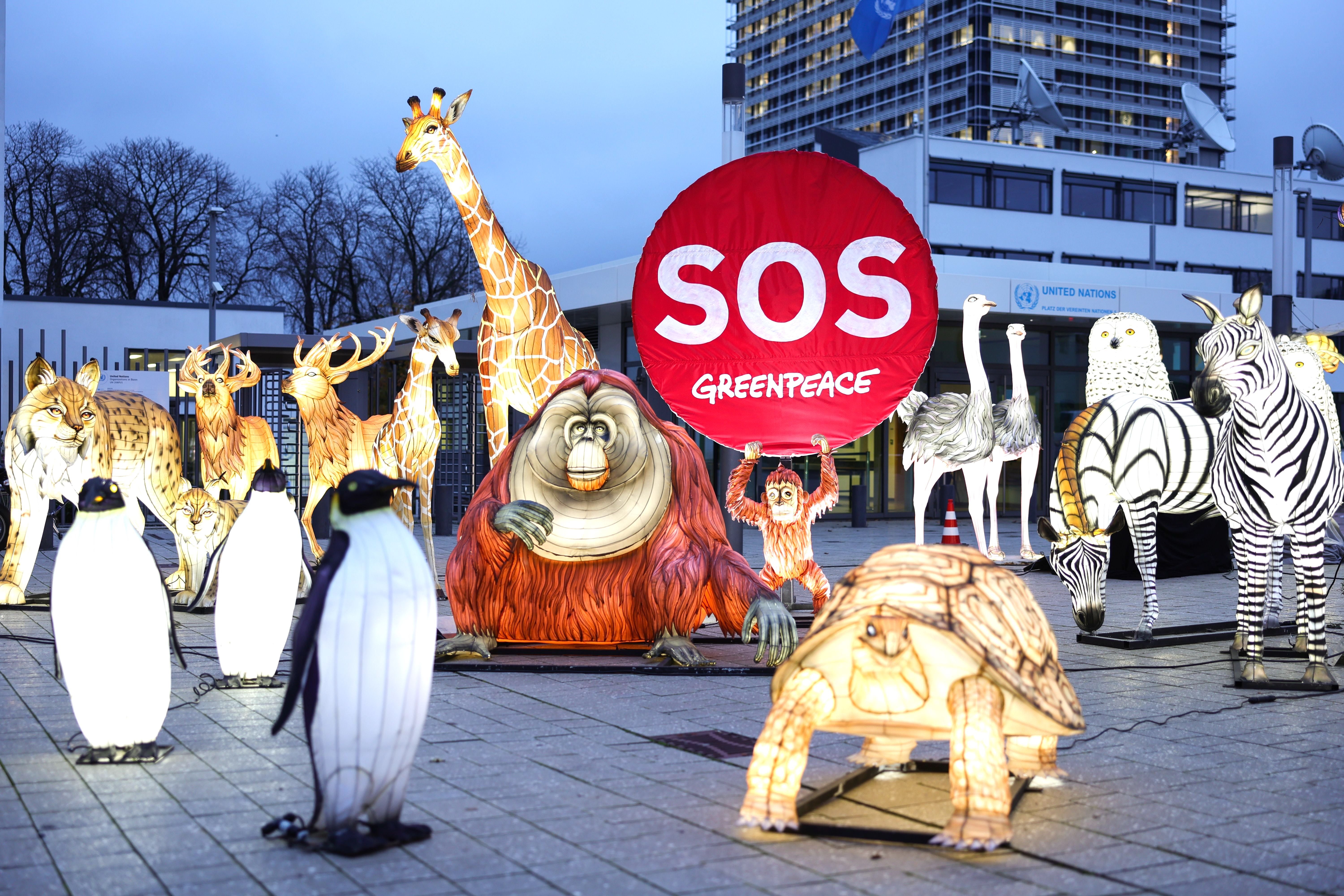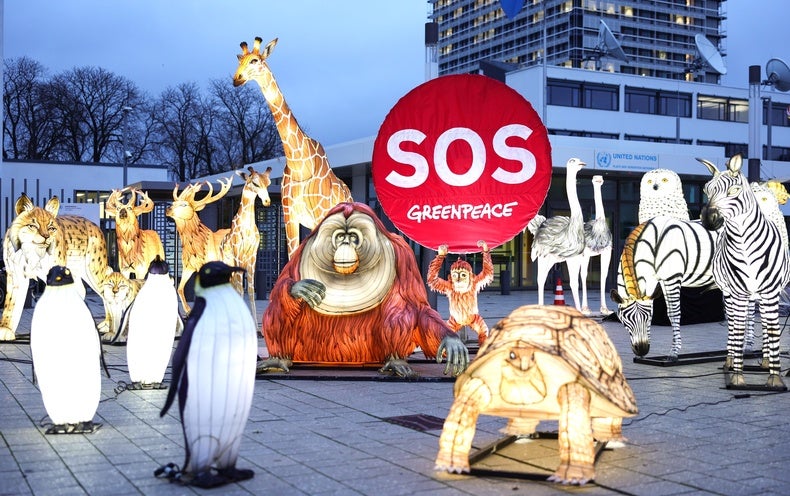
Over the next 12 days, delegates from around the world will try to hammer out a Paris-style agreement to halt and reverse biodiversity loss by 2030.
The United Nations biodiversity conference will feature only one world leader—Canadian Prime Minister Justin Trudeau—and far fewer celebrities, media outlets and attendees than last month’s U.N. climate summit in Egypt. But its outcomes are integral to meeting global climate goals.
“We need to underline the direct connection now between climate change and biodiversity,” said Elizabeth Maruma Mrema, executive secretary of the U.N. Convention on Biological Diversity. “If we look at recent disasters—be it floods, drought, heat waves, wildfires—yes, we always say it’s because of climate change. But where are these disasters happening? They all happen on the ecosystems on biodiversity, and clearly, unless we protect and restore that biodiversity, climate warming will continue.”
This year’s nature-centered talks—already two years delayed—have a lot to tackle. There are goals to protect 30 percent of the world’s lands and oceans by 2030, secure more financing for conservation, and end subsidies that harm nature. But negotiators will have to overcome numerous hurdles to accomplish those aims.
While Canada is hosting the summit in Montreal, China holds the convention’s rotating presidency; the two countries must work together to manage the talks. Negotiations over a 10-year framework have dragged on for months, some countries are wary about agreeing to specific targets, and the United States is unable to vote on procedures because it has never ratified the convention.
Climate and biodiversity leaders say the stakes are high but have gotten short shrift for too long.
The biodiversity crisis “requires the same level of effort and action” as the climate crisis, said Steven Guilbeault, Canada’s minister of environment and climate change.
“When we conserve and restore forests and wetlands, we support nature, and in turn, nature supports us through carbon sequestration,” he said.
The plan of a decade
The most pressing challenge will be finalizing a framework to halt and reverse biodiversity loss by 2030.
The last 10-year framework—laid out in 2010—set targets for dramatically reducing the loss of natural habitats and expanding conservation areas. But none of those 20 targets was met, raising questions about how ambitious the next round of targets should be.
“There’s a lot of pressure not to backtrack,” said Tierra Curry, a senior scientist at the Center for Biological Diversity. “But there’s also a lot of pressure to develop targets that countries feel are actually reachable in the next seven years.”
Much remains unresolved going into the talks. Negotiators have been meeting for months, and a last-minute push to resolve differences before the summit made little progress. The current draft contains multiple goals, 20-plus targets and scores of bracketed text that remains contentious.
Mrema said Tuesday that delegates didn’t go “as far as expected” and would need to refine the text and seek compromise. If they can’t, China as president would need to step in, said Li Shuo, a senior global policy adviser at Greenpeace East Asia.
Experts said progress at the summit is crucial because nature underpins life on the planet. It also contributes to trillions of dollars in global gross domestic product, making a risk to biodiversity also a threat to the global economy.
“The negotiations here at this COP must succeed,” Inger Andersen, head of the U.N. Environment Programme, said during a press conference Tuesday. “If the web of life fails, we will fail with it.”
Protecting nature à la Paris
At the heart of this year’s meeting is a new deal that aims to protect roughly one-third of all land and sea by 2030. Guilbeault called it the equivalent of the 1.5 degree Celsius temperature target laid out in the Paris climate agreement.
More than 100 countries have backed that target. But getting all countries to agree has proven challenging.
Some developing countries are pushing for more funding to help them meet any new binding goals. Others that are more resource-dependent, like Indonesia, have opposed any numerical set aside for protection. Indigenous groups want to ensure that any deal doesn’t lead to land grabs in the guise of conservation that could harm the important role they play in conservation.
More funding is vital. A recent U.N. report found that investments in nature-based solutions need to triple by 2030, to $484 billion annually, for the world to limit global warming and halt biodiversity loss. Subsidies for energy and agriculture that harm nature also need to be redirected to restoring it, according to the report.
Many of the issues discussed at last month’s U.N. climate summit in Egypt could factor into biodiversity outcomes, including a push for more private-sector investment in nature protection, payments for climate damages and the reform of multilateral development banks.
But Shuo from Greenpeace warned that drawing too close a connection could also prove harmful if it means lumping all finance together rather than allocating it to specific outcomes.
Still in the game
In his opening speech, Trudeau pledged $350 million to global biodiversity efforts, in addition to the 1 billion Canadian dollars he has already committed to nature-based climate solutions by 2026.
The world’s biggest countries—home to vast forests, coastlines and wetlands—have the ability to shift the direction on nature loss, he said, pointing to Russia, China, Canada, Brazil and the U.S.
Notably, the U.S. is the only U.N. member state that has not ratified the Convention on Biological Diversity due to persistent congressional opposition (Climatewire, Oct. 14, 2021).
That prevents it from voting on procedures that continue to shape the treaty. And critics say the lack of U.S. participation hurts its leadership on other environmental matters, such as global warming.
But some activists assert that the U.S. is still moving forward on its own to achieve some of the goals and objectives outlined at the U.N. biodiversity talks.
“While they may not be a the table, they are very much in the game,” said Will Gartshore, senior director for government affairs and advocacy at the World Wildlife Fund.
The U.S. joined a group of nations earlier this year in pledging to protect 30 percent of the world’s land and seas by 2030. At last month’s climate talks, the Biden administration also outlined a road map for nature-based solutions to climate challenges that included efforts to unlock more funding. And the State Department has tapped Monica Medina to serve as the first-ever special envoy for biodiversity and water resources.
In Montreal, the U.S. can play a constructive role in helping parties nail down clear and agreed-upon language in the final framework, Gartshore said.
An agreement will be critical to ending what U.N. Secretary-General António Guterres has dubbed a war on nature.
“We are treating nature like a toilet,” he said at Tuesday’s opening ceremony in Montreal.
“It is up to us to accept responsibility for the damage we have caused,” he added, “and take action to fix it.”
Reprinted from E&E News with permission from POLITICO, LLC. Copyright 2022. E&E News provides essential news for energy and environment professionals.

